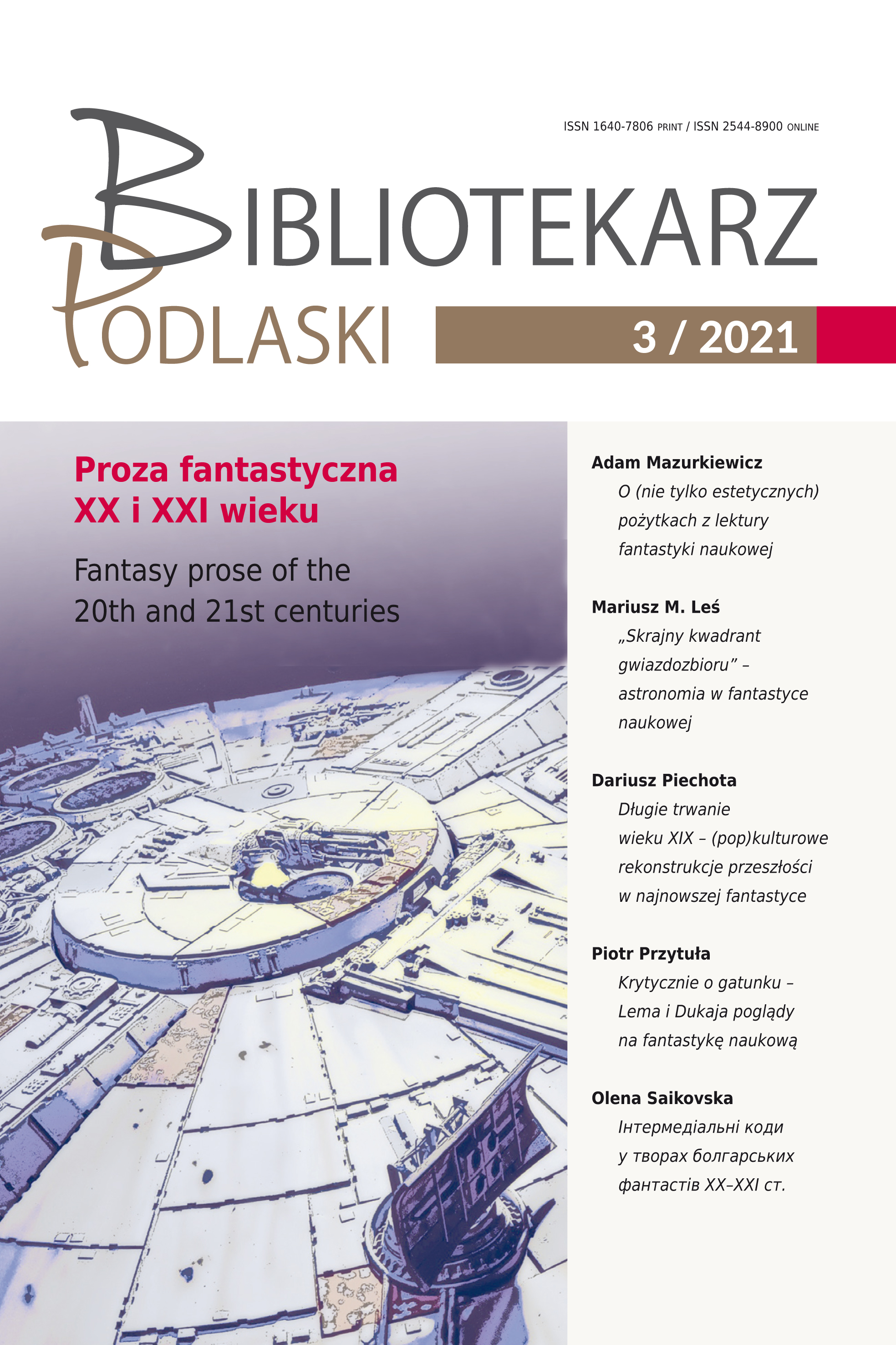Abstract
The second half of the twentieth century was the time of the most dynamic development of fantasy, which places this genre in the space of postmodern poetic. One of the first Polish authors utilizing this type fictional setting was Andrzej Sapkowski. His short story, Maladie, should be treated as a manifesto of the form and function of this kind of fantastic literature. This paper aims to follow the structure of the story in relation to the intertextuality category, including the retelling strategy, but also distinguishes features of postmodern texts: being a scriptible and above that world-building, literary character of the text and metatextuality. By following the relation between Sapkowski’s short story and Joseph Bédier’s novel, it is possible to illustrate the standpoint of the Polish author regarding the essence of fantasy and bring closer narrative tools used in his prose.
References
Bédier J., Dzieje Tristana i Izoldy, tłum. T. Boy-Żeleński, Łódź 2010.
Sapkowski A., Świat króla Artura. Maladie, Warszawa 1995.
Stasiewicz P., Między światami. Intertekstualność i postmodernizm w literaturze fantasy, Białystok 2016.
Zając J., Światy (nie)przedstawione. O twórczości Andrzeja Sapkowskiego, [w:] Skład osobowy. Szkice o prozaikach współczesnych tom 3, red. A. Nęcka, D. Nowacki, J. Pasterska, Katowice 2019.
Articles published in the “gold open access” mode on the basis of a non-exclusive license agreement between the publisher and the author. Permitted use:
- the publication may be read and stored on any device,
- the publication may be cited (with obligatory reference to the author, the title of the text, as well as the full title, bibliographic address of the issue and page of the journal)
The editorial team of “Bibliotekarz Podlaski” implements an open access policy by publishing materials in the form of the so-called Gold Open Access. From volume 42 (issue 1/2019), the journal is available under the Creative Commons license (Attribution – ShareAlike: CC BY-SA).
The key declarations of the Open Access and Open Science movement, which we fully support, are available on the CEON Open Science website.
COPYRIGHT:
The editorial team of “Bibliotekarz Podlaski” implements an open access policy by publishing materials in the form of the so-called Gold Open Access. The journal is available under the Creative Commons license – Attribution – ShareAlike 4.0: International: CC BY-SA 4.0).
The key declarations of the Open Access and Open Science movement, which we fully support, are available on the CEON Open Science website.
“Bibliotekarz Podlaski” allows its readers to read, download, copy, distribute, print, search and link to the full content of articles. We enable full, immediate, unlimited (both in a territorial, temporal and technical sense) open access to all published content, in accordance with the principle that freely available research increases and accelerates the global development of science and the exchange of knowledge.
The editorial team of “Bibliotekarz Podlaski” encourages authors to place articles published in the journal in open repositories (after the review or the final version of the publisher), provided that a link to the journal’s website is provided.
The journal does not charge the authors any fees for accepting and publishing their texts.


